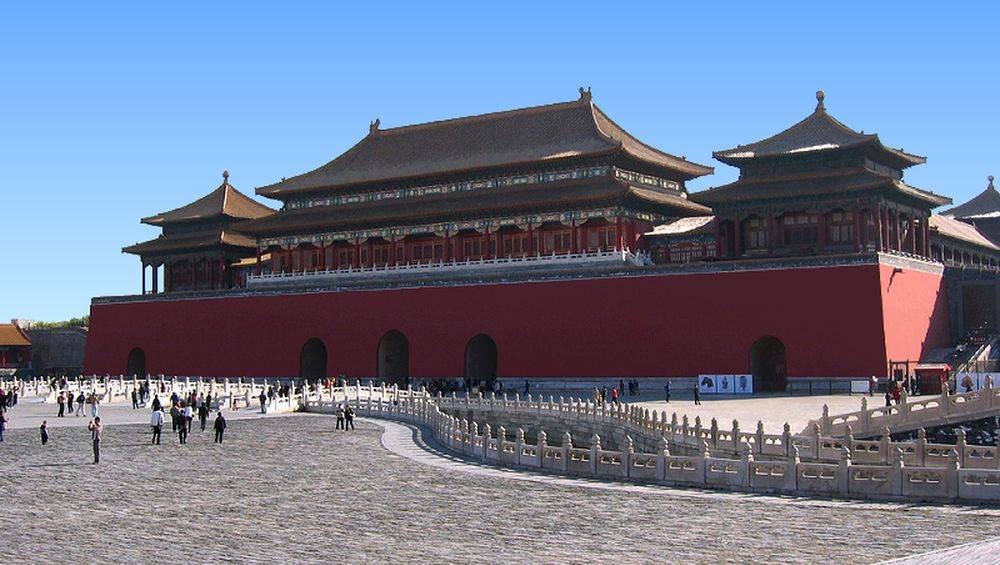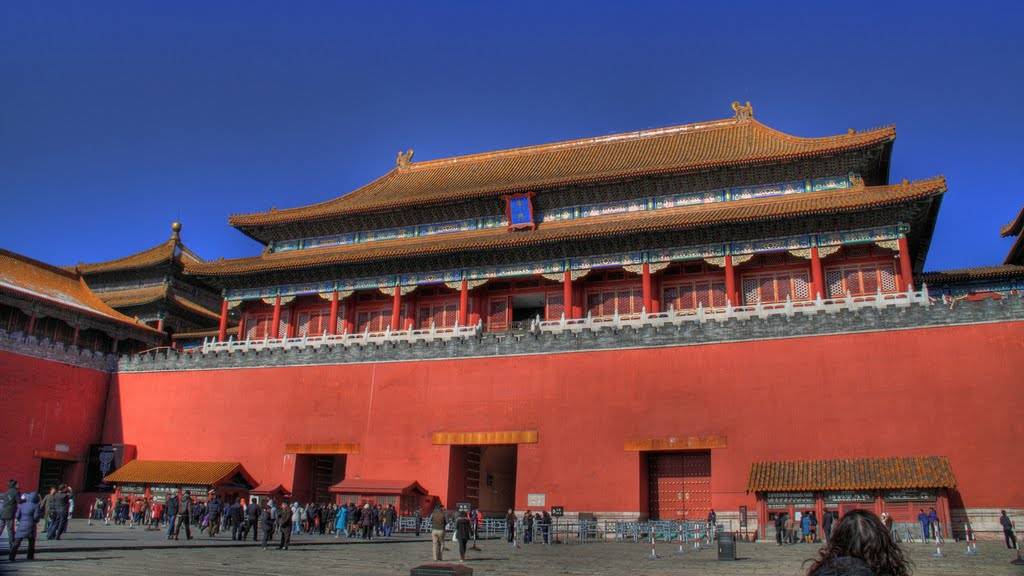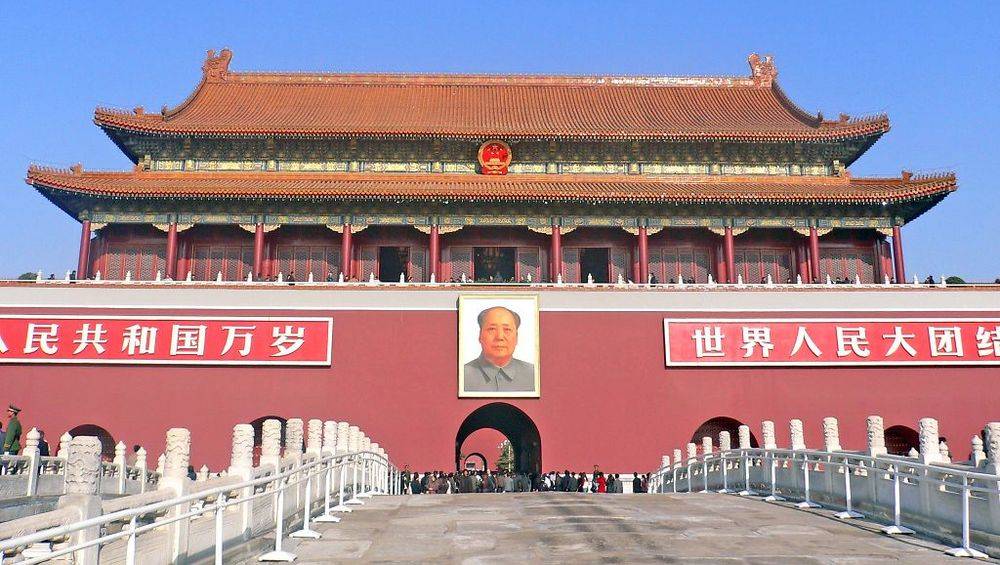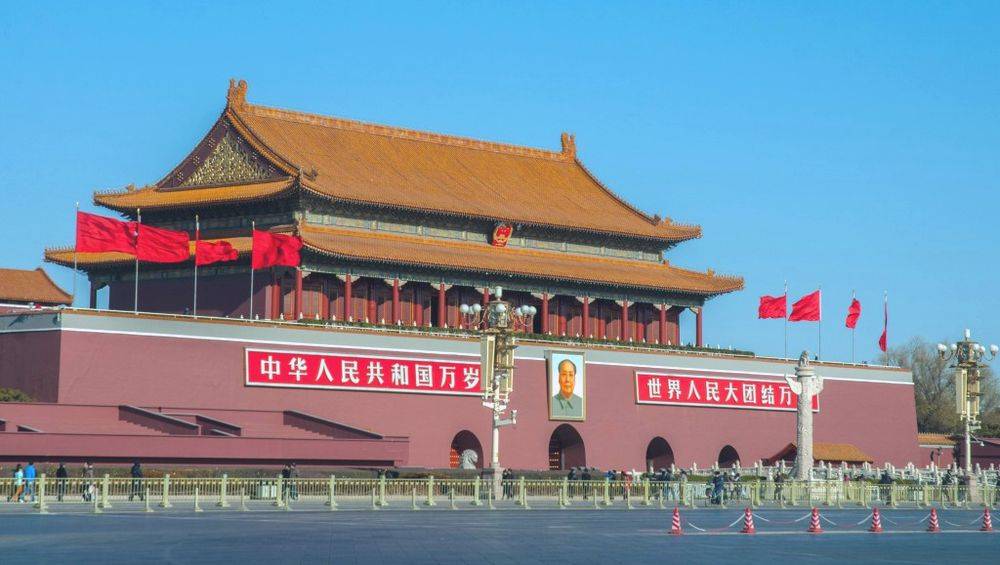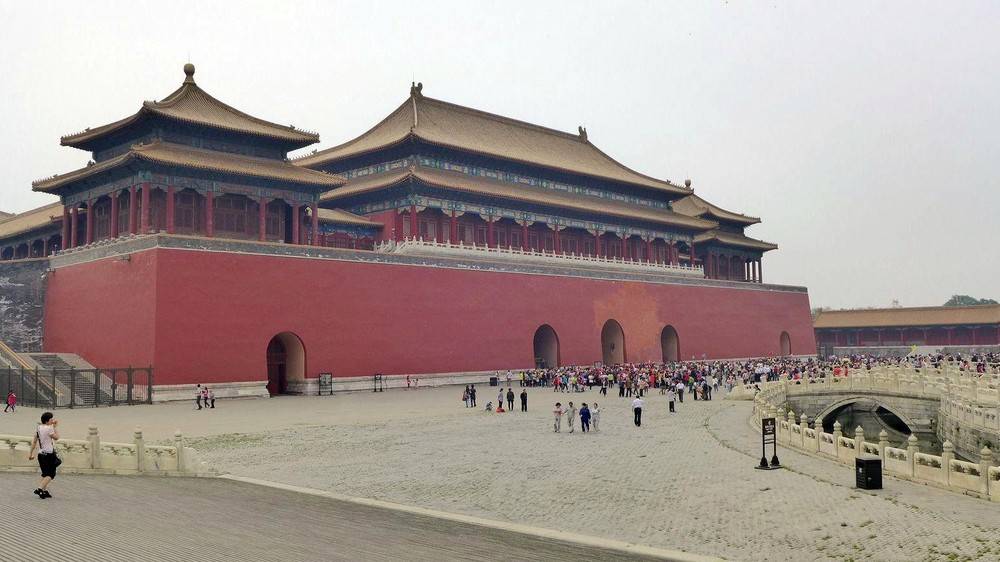La porte du Midi (Wumen)
Named Wumen in Chinese (Wu: Porte, Men: Méridional), the Porte du Midi is one of the 4 doors of the Forbidden City. Nowadays, it is the only possible entry, the others only serving occasionally or for practical reasons, not for the visit of the site. This is by far the most important of the four. Facing the south, it overlooks Tian'anmen Square where the ticket offices are located. This gate is on the north-south axis of the palace, right in the axis of symmetry. let us recall that the palace is as symmetrical as possible because it is a sign of balance, which was supposed to refer to the Chinese people.
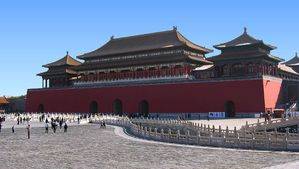
Meridian gate
Description
This door was built at the same time as the palace, between 1407 and 1420. More than just a hole in the wall, it is a tower imposing 37.95 meters high (124.5 feet). It has a concave layout with five towers, which gives it (it appears) the image of a flying Phoenix, hence its other name, "the tower of the 5 Phoenix" ("Wufenglou" in Chinese). The central tower, with double glazed roof tiles, measures 60.05 meters (198 feet) in length and 25 meters (82 feet) in width, for a height of 12 meters (39 feet). To the east and west of the main building two small towers are joined, towers of which go two covered corridors heading south, linking it to two smaller square towers. It forms a U-shaped assembly surmounting the openings of the wall. On the wall precisely, on each side of the frontispiece, there is one aperture per turn, making a total of five passages, one principal and four annexes, for the Porte du Midi.
The central building is quite massive, a long covered corridor actually turns. At both ends are two bells and drums whose functions were to announce the departure of the Emperor for the temple of Heaven for the bells and for the ancestral temple for the drums. Both were used at the same time during the great ceremonies that took place in the Hall of Supreme Harmony (Taihedian).
On the Tian'anmen Square, this door is equipped with two religious temples: the first is devoted to the ancestor worship of the dynasty and the other to the divinity of Earth and Grain. These are the tutelary gods of the Chinese imperial state. But there, we are not yet in the forbidden city.
The 5 passages
The passage of this door implied to comply with certain strict rules. The central gate was for the exclusive use of the emperor, but this rule was relaxed for two occasions.
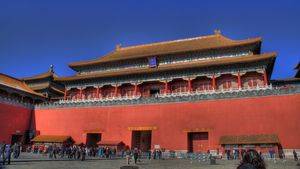
Meridian gate
The first was for an Empress who was able to cross this gate through the main passage on the day of her marriage. The second was to honor the three best Chinese scholars who obtained the highest rewards in the national examinations presided over by the emperor, who were allowed to pass through this passage after their interview with the emperor. The small gate to the east was used by ministers and officials, while the west gate was used by the royal family. The other two doors in the corners were used only when there were great ceremonies. In ancient times, the entrances and exits of the Forbidden City were very strict, this for the safety of the members of the Imperial family. People from the people had no entrance fee through any of these gates. Nowadays, the three central doors are available for all tourists. The two lateral doors have been modified and give access to amenities, mainly for tourists.
Use
The southern gate was the usual place for the promulgation of the writings of the emperors. In addition, a number of special events, ceremonies and special events were held here. On the 15th of January, according to the lunar calendar, was the feast day of the Lanterns. The emperor received the officials on this occasion (during the Ming Dynasty) in the central tower of the South Gate. As food was a strong symbol in China, he offered his ministers certain foods for the festivities, for example pastry on the first day of spring (February 4, always according to the lunar calendar), cold cakes (May 5, festival of the dragon boat, or the 9 of September, for the festival of Chyongyang) It is also here that the flagelations of the officials had been passed through the central tunnel, reserved to the emperor. In 1519 158 officials were punished of which 15 beaten to death. This cruel punishment was abolished at the end of the Ming dynasty.
On the tenth day of the lunar calendar the astronomical specialists presented to the emperor and his wife the calendar of the new year at the gate of the south. This calendar included the dates of the various ceremonies planned. Among the habits, it is sometimes thought that when the Chinese troops returned victorious from a battle, a sacrifice of prisoners was organized before the Porte du Midi. In fact, it was not true, this ceremony took place, but only for the criminals, and the vegetable market, in Beijing.
The door of the noon crossed, the visitor is in a big courtyard crossed by a river with 5 bridges, the river with the waters of gold.
Some photos

Meridian gate

Meridian gate
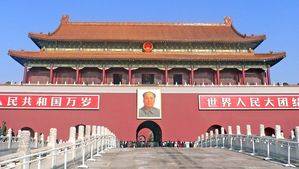
Meridian gate
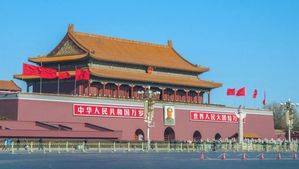
Meridian gate
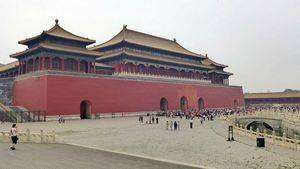
Meridian gate
See too:
Back to the list of the pavilions of the forbidden city






